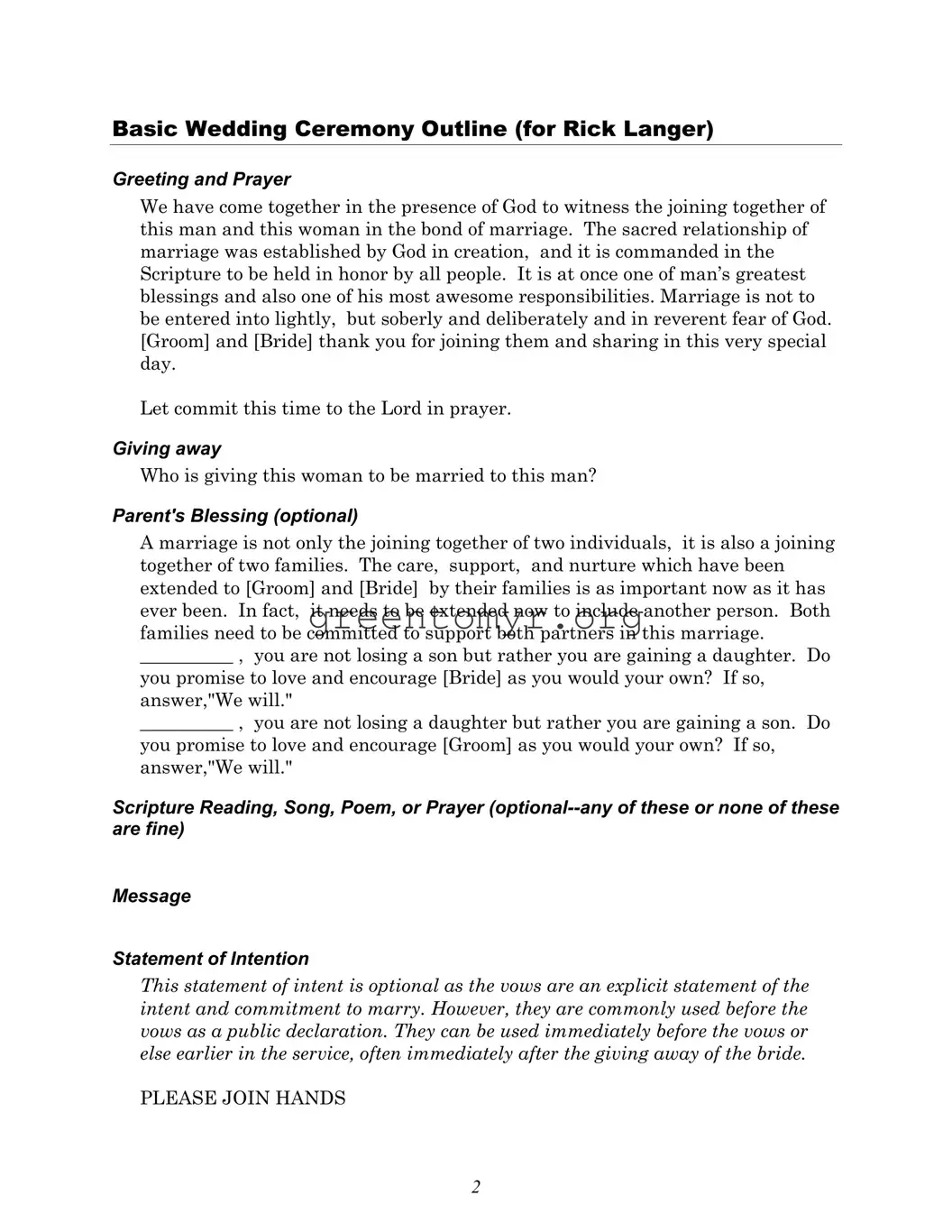Message
Vows
The pastor may say, “Will you now make your vows to one another?” The man and the woman are to face each other, holding hands. The Bride gives her flowers to the Maid of Honor.
The Groom repeats the vow after the pastor as follows:
I, G****, take you B****, to be my wedded wife, / to have and to hold from this day forward, / for better for worse, / for richer, for poorer, / in sickness and in health, / to love and to cherish, till death us do part, / according to God’s holy plan / and with God’s gracious help.
[Alternative ending: …according to God’s holy ordinance; / and thereto I pledge to you my troth.—or--and thereto I pledge myself to you.]
The Bride repeats the vow after the pastor as follows:
I, B****, take you, G****, to be my wedded husband, / to have and to hold from this day forward, / for better for worse, / for richer, for poorer, / in sickness and in health, / to love and to cherish, till death us do part, / according to God’s holy plan / and with God’s gracious help.
Giving of Rings
You have determined to seal your vows by the giving and receiving of rings. Rings are a sacred symbol, signaling to others that you are in an exclusive commitment to your beloved. The precious metal from which they are forged reminds you of the precious possession you have in marriage. And the infinite circle they form remind you that your new relationship is never to end.
G****, indicating your responsibility to B**** to receive her into your care and keeping, I give you this ring to place on her finger, as both a symbol and promise that you receive her. Just as this ring circles her finger, so you are to encompass her with strength and protecting love.
Groom (repeating after the pastor):
B****, this ring I give you / as a constant reminder / of my abiding love and commitment.
B****, indicating your responsibility to G****, to receive him into your care and devotion, I give you this ring to place on his finger as both a symbol and promise that you receive him. Just as this ring circles his finger, so you are to encompass him with strength and protecting love.
Bride (repeating after the pastor):
G****, this ring I give you / as a constant reminder / of my abiding love and commitment.



